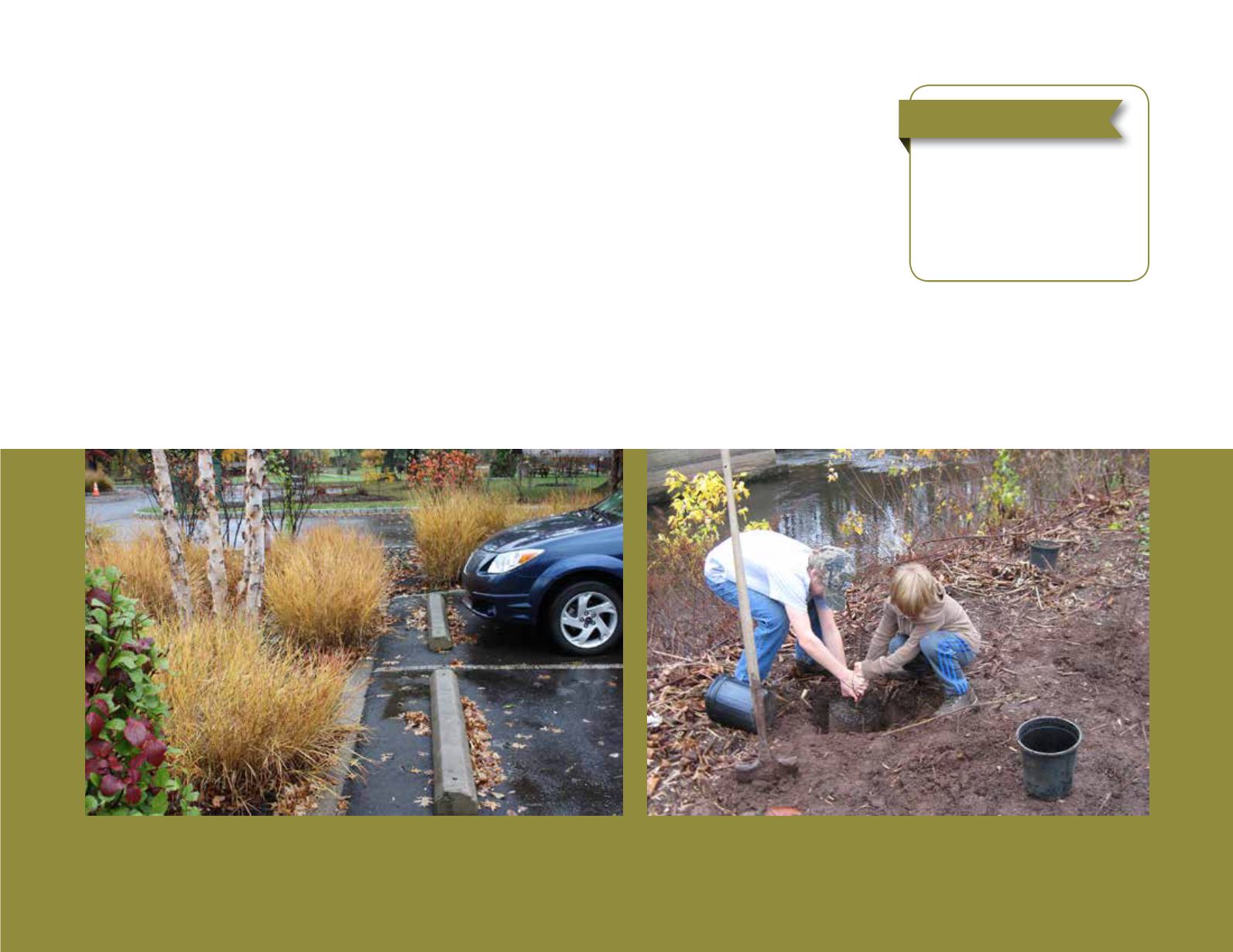
SUSTAINABLE PLACES
...advocate with local municipalities and developers for best stormwater management practices
Over time, the techniques for controlling stormwater have evolved from concrete pipes and retention basins to more
naturalized systems. The goal is to mimic the hydrology of the property that existed before development. So, if a quarter
of the stormwater flowed off the property before it was developed while the rest was infiltrated into the ground, absorbed
by plants, or evaporated, then ideally only a quarter should flow off afterwards. While it may be difficult to duplicate pre-
development conditions exactly, post-development hydrology should mimic these conditions as much as possible.
Stormwater Best Management Practices (BMPs) attempt to mimic a more natural water cycle and include naturalized basins,
vegetated swales, disconnected impervious surfaces, rain gardens, bioretention areas, porous pavement, infiltration basins,
sediment forebays, stormwater extended detention ponds, stormwater ponds, and constructed wetlands.
The county will continue encouraging installation of stormwater BMPs in both new and existing developments, including
retrofits of existing facilities, and will create a hands on BMP education project, a database of stormwater BMP projects and
green developments, and educational information on stormwater authorities. In addition, the county will continue to advocate
for adoption of its model Riparian Corridor ordinance, which requires a vegetated buffer next to streams.
■■ Municipalities adopting
new best management
practices
■■ New installations
of stormwater best
management practices
Measuring success
Bioswales and porous paving allow water to infiltrate into the ground and help with
groundwater recharge.
Because trees reduce stormwater runoff and prevent erosion, they are
particularly important near rivers and streams.
40


